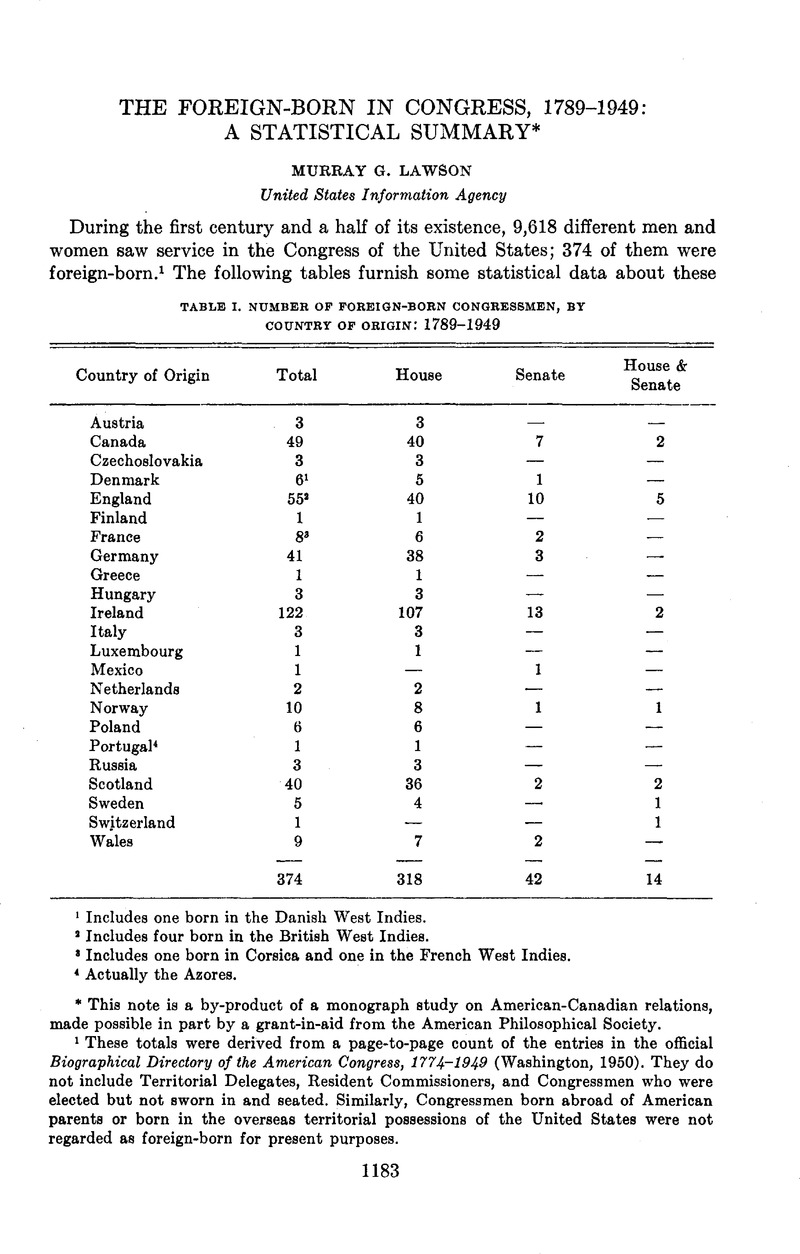No CrossRef data available.
Article contents
The Foreign-Born in Congress, 1789–1949: A Statistical Summary*
Published online by Cambridge University Press: 02 September 2013
Abstract

- Type
- Research Note
- Information
- Copyright
- Copyright © American Political Science Association 1957
References
1 These totals were derived from a page-to-page count of the entries in the official Biographical Directory of the American Congress, 1774–1949 (Washington, 1950)Google Scholar. They do not include Territorial Delegates, Resident Commissioners, and Congressmen who were elected but not sworn in and seated. Similarly, Congressmen born abroad of American parents or born in the overseas territorial possessions of the United States were not regarded as foreign-born for present purposes.
2 As used here, the adjectives “Democratic” and “Republican” embrace not only the two contemporary parties bearing these labels but all of their lineal predecessors as well.
3 This analysis may call for re-examination of the late Professor Sait's observation that “voters of foreign extraction … aside from the Irish, who are mostly Democrats, and the Germans and the Scandinavians, who are mostly Republicans, do not generally favor one party more than another.” Penniman, Howard R., ed., Sait's American Parties and Elections (4th ed., New York, 1948), p. 165Google Scholar.





Comments
No Comments have been published for this article.